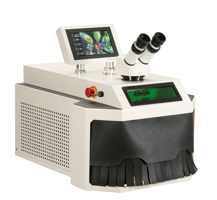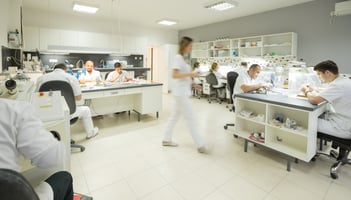The rise of Laser Welding Laser welding in dental prosthetics and orthodontics continues to earn...
The digital advancement of the perfect smile
 Demand for straighter, more visually pleasing teeth keeps on growing.
Demand for straighter, more visually pleasing teeth keeps on growing.
According to a report recently published by Grand View Research: “Factors such as the growing patient population suffering from malocclusions, rising technological advancements pertaining to dental treatment, and growing demand for customised clear aligners are driving the overall market growth”.
“Recently, a growing number of adults are opting for orthodontic treatment, which is subsequently increasing demand for dental equipment that has aesthetic appeal.”
Orthodontic Australia reports that 55% of Australian Adults are conscious because of the appearance of their teeth and 62% of the adults are willing to fix their crooked teeth.
Clear aligners are filling a large part of the demand. This segment alone is expected to grow six-fold over the next seven years to 2028.
Yet clear aligners are not the only answer as they are considered unsuitable for many treatments. Factors such as the degree of correction required, treatment complexity, and the often lengthier duration of clear aligner treatment all require alternative solutions.
A high-performing option gaining more widespread acceptance is using the indirect bonding method.
According to Terrence Whitty, founder and owner of Fabdent: “Scientific studies have concluded that the indirect bonding technique is significantly (twofold) more accurate than the direct technique for all teeth in both labial and lingual orthodontics”.
Today, CAD BRACE Digital technology can design bracket placement with micron-level accuracy. The process, while technically advanced, is simple.
A scan of the patient’s dentition is made using an intraoral scanner. Digital twins of the brackets are available as files from DENTAURUM. The virtual brackets are then placed on the virtual model of the teeth using the software to determine the ideal position. A transfer tray is then created in CAD and 3-D printed with a substrate material. The trays are delivered to the clinician with the brackets unloaded or loaded in place.
The result is an unparalleled level of precision that maximises bonding performance.
Clinicians can choose to have a lab deliver the trays with the brackets perfectly positioned, place the brackets in place at the surgery, or acquire the software and equipment to complete the process in-house.
Using this technique, clinicians spend significantly less time working directly on the patient. It’s a better patient experience and a more profitable method – all with a proven result.
DENTAURUM products relating to the CAD driven indirect bonding method are known as Standard Triangle Language (STL) Files – a standard file type for 3D printing.
To access STL file data, please contact us at info@dentaurum.com.au or call 1300 880 782.
Dentaurum wishes to thank Terence Whitty for using the content and expertise contributed to this article. His original article appeared on the Fabdent Website.
About Terence Whitty
Terence Whitty is a well-known dental technology key opinion leader and lectures nationally and internationally on various dental technology and material science subjects. He is the founder and owner of Fabdent, a busy dental laboratory in Sydney specialising in high tech manufacturing. Most specialties are covered using the latest advances in intra and extraoral scanning, CAD/CAM, milling, grinding, and 3D printing, including ortho, fixed and removable prosthetics, computerised implant planning and guidance TMD, sleep appliances and paediatrics.


@2x%20copy%202.jpg?height=200&name=1200%20x%20628%20(export%20retina%20jpg)@2x%20copy%202.jpg)
